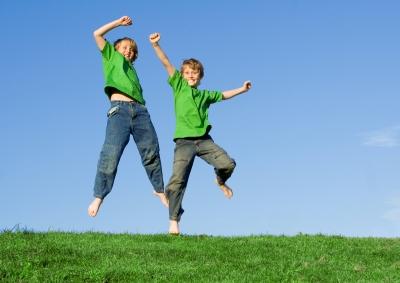TIPS for Success in Middle School
Why is self-control important?
Self-control predicts academic, personal, and economic outcomes, as well as health outcomes. One famous experiment showed that preschool students who demonstrated more self-control had better academic and social outcomes decades later than did those who showed less self-control as young children, including less drug use and higher SAT scores.
How do I grow self control?
Choose your environment wisely
Select the environment that will be most beneficial to you. For instance, after the school day ends, students may retreat to their family’s living room, where the temptation of TV might be very strong—or they can go to the library, which is designed to eliminate distractions.
Tweak your environment to minimize distractions
Tweak the environment you find yourself in to obtain your desired outcome. For instance, while in a conference or in class, sit closer to the presenter and/or farther from noisy attendees/classmates. Another strategy can be to place your cell phone out of sight to avoid being distracted during class, work, or meals.
Shift your focus
If you find yourself in a distracting or frustrating situation, shift your focus to something that helps you achieve your desired emotional state. This can be either an internal or an external focus. For instance, while in a boring meeting, an external shift would be to track the person who is talking by looking directly at them, rather than staring out the window. An internal approach would be to think about upcoming vacation plans to avoid falling asleep.
Shift your frame
Reinterpret the situation to alter your emotional state. For instance, rather than thinking of a mistake as a personal shortcoming or failure, think of mistakes as information that will help you in the future. Also consider framing certain trying situations as opportunities to exercise and grow your willpower.
Plan your response
Think proactively about how you might best respond in a stressful situation, keeping in mind effective practices including deep breathing, suppressing an undesired behavior, or emulating people you admire.
One proven strategy is to plan out IF/THEN scenarios to overcome obstacles. For instance, when trying to stick to a healthy lifestyle, don’t just hope to go to the gym: plan exactly when in the day you will go and specifically what you will do to exercise. The same is true for negative feelings: ”IF I start to feel angry, THEN I will take a deep breath and start counting backward from a 100 (until I calm down and think before I act).”
Another promising strategy is to refer to yourself in the third person when upset (sometimes called the “say your name” strategy).
Set up for studying success!
(excerpt from the Huffington Post)
Middle school is serious stuff! Your child may be taking his first A-G class to satisfy college entrance requirements. He/She may be taking a foreign language class, a math class that is advanced, and may need to complete a science project! Make sure that your child has a standing study time, the better to stick with it daily. Have a snack ready for your student when they get home, the body and brain need re-fueling after a long day. Have a well-lit, quiet area, where supplies are readily available. You as the parent don’t need to hover around, but be a resource for your child. Many times, boys especially, need help with organization! Do a binder check regularly and see if your child is turning in what needs to be turned in and completing assigned tasks.
And finally, check Infinite Campus often to keep up with your child's grades and possible missing assignments.

Why is Grit Important?
Research has shown grit to be predictive of achievement in especially challenging contexts in which stamina is key. For instance, gritty cadets are more likely to persist at West Point Military Academy, gritty students in the Chicago Public schools are more likely to graduate, and gritty competitors are more likely to advance in the finals of the Scripps National Spelling Bee.
How do I grow grit?
It’s important to know that there are still a lot of open questions about grit, including the degree to which it is a teachable skill and, to the extent it can be learned, how best to teach it. Though the research about grit is still emerging, we do have some ideas about how you might develop grit.
Cultivate a growth mindset and optimism.
We believe that the idea of grit is related to both optimism and a growth mindset. When you believe that setbacks are temporary and that problems are surmountable with effort and ingenuity, you’ll likely try harder, or try another tactic, when you encounter obstacles.
Challenge yourself in your practice.
Research on world-class experts in music, sports, chess, and other domains suggest that thousands of hours of deliberate practice are necessary to achieve the highest skill level. Often, when we look at those who are successful in their field, we don’t see the hidden hours of gritty and grueling practice it took to get there. We believe that productive practice should focus on weaknesses, feel difficult, be repetitive, and include immediate and informative feedback.
Stay passionate about your purpose.
Grit isn’t just hard work and persistence—it’s also passion for a personally meaningful goal. Determine the topic or activity that captures your attention the most, and work on developing grit in that area. We suggest enhancing your practice and interest by working with role models, coaches, and peers to develop that interest and skill over time.
Know it’s OK to quit.
Not every piano-playing ten-year-old will become a piano-playing twenty-year-old. It’s OK to quit activities, but choose the right time to quit: after you’ve been thoughtful and reflective, and definitely not in a moment of frustration. Gritty people know the difference between the two and quit responsibly.

Why is zest important?
Zest and vitality correlate with autonomy and relatedness. Vitality may also be both a cause and effect of health and well-being.
How do I grow zest?
It’s important to know that there are still a lot of open questions about zest, including the degree to which it is a teachable skill and, to the extent it can be learned, how best to teach it. Though the research about zest is still emerging, we do have some ideas about how you might develop zest.
Exercise!
Make a concerted effort to exercise because physical activity can increase your energy and vitality.
Refuel
Get a good night’s sleep and eat a healthy breakfast.
Become one with nature
Find time to engage with the natural environment, as contact with nature can influence vitality.
Gain autonomy
Play an active role in your decisions, because greater autonomy tends to lead to greater energy and engagement.
Do what you love
Dr. Jonathan Haidt suggests doing something because you want to do it, not because you have to do it. Find your passion. What do you love to do? If you already know what your passion is, then build time for it in your schedule. If you don’t, then try to discover it. What did you love to do when you were younger? Try it again now.
Why is optimism important?

In students, optimism predicts greater persistence on academic tasks and higher academic achievem
ent. Some research has shown that optimistic teachers are more effective at improving the academic performance of their students, too. Optimism also predicts better physical health and lowers the risk for anxiety and depression.
How do I grow optimism?
Adopt a growth mindset
Optimism reflects the tendencies to: 1) attribute problems to temporary and changeable causes; 2) expect good things from others, the world, and the future, and 3) believe that we can work to overcome obstacles and achieve our goals. Optimism is therefore very closely related to what Carol Dweck and colleagues call growth mindset—the belief that the ability to learn is itself something that can be improved with effort.
Create caring environments
Children are more likely to develop optimism when they grow up in caring environments. Parenting behaviors that convey affection predict the development of optimism in children, perhaps because children learn to expect that others will care about them and treat them well.
Model optimism in actions and language
Some research suggests that children may internalize optimism from their parents. When we encounter problems in our own lives, we can model optimism by conveying our belief that the problems will pass or that we can work to address them. When talking with our children about mistakes they have made or problems they have helped to create, we can focus on the specific behaviors that contributed, especially behaviors they can change.
Find (or create) opportunities to overcome adversity
Optimism also develops through personal experiences of working hard to achieve goals and to overcome challenges. These experiences increase children’s sense of control and competence and demonstrate that effort pays off. The right level of challenge will vary by age and by child. As parents, we can support our children as they take on greater and greater challenges.
Parents naturally want to protect our children from difficult and painful experiences. Yet, these experiences are inevitable. And to some extent they are probably necessary for optimism to develop. It can help to keep in mind that the difficult situations our children encounter can provide opportunities for them to learn that many problems are temporary and surmountable.
Why is Curiosity Important? 
Exposure to differing viewpoints contributes to positive psychosocial outcomes, interpersonal relationships, subjective well-being, cognitive development, and, last but not least, good citizenship.
How do I grow curiosity?
Encourage questioning
Adults should encourage questioning and exploration in themselves and others. Adults can help children by answering children’s questions or pointing children in the direction of where to find answers. When children (or other adults) are about to draw a conclusion, adults should encourage them to look for alternative conclusions and to look for reasons on both sides.
Read widely
The ability to read, and the habit of exploring multiple sources for information, increases the possibilities for search. Children should be encouraged to read as much as possible and as early as possible, and about the topics that are most interesting to them. Adults should seek to expand the set of written materials that they regularly read (e.g., new websites, magazines, newspapers, etc).
Question your assumptions
Developing curiosity and active open-mindedness means recognizing your own biases and assumptions. Question these just as you begin to question other conclusions that you have already accepted. Do not stop yourself when you want to find out something. Look it up. The Internet now makes this much easier, but of course we also must think about what we find there, with the same sort of active open-mindedness that we apply to our own conclusions.

Why is social intelligence important?
By helping to improve people’s social relationships, social and emotional learning programs have been shown to enable participants to demonstrate greater enjoyment and stronger performance in school and less risky behavior (including reduced drug use and violence).
How do I grow social intelligence?
It’s important to know that there are still a lot of open questions about social intelligence, including the degree to which it is a teachable skill, and, to the extent it can be learned, how best to teach it. Though the research about social intelligence is still emerging, we do have some ideas about how you might develop social intelligence.
Provide active and constructive responses
Respond to people in an active and constructive way to build strong relationships. For instance, rather than saying something discouraging or nothing at all to your child, student, co-worker, parent, or friend, follow up on what s/he said with what Dr. Shelly Gable and others call an “active and constructive response.”
Learn about social-emotional learning programs
Consider integrating social-emotional learning programs that consist of “step-by-step approaches that actively involve students in skills development over extended periods of time and have clear and explicit goals” into your school, and implement them with fidelity.
Why is Gratitude Important?
Studies have shown that people who keep gratitude journals tend to be more physically active, are more optimistic, and have higher reported levels of energy and enthusiasm. Furthermore, grateful people tend to live longer and engage in more pro-social behaviors than do less grateful individuals. Studies show that children and adolescents who practice gratitude are more engaged in school, are more involved in their communities, are less materialistic, have a greater sense of purpose, and are taking better care of their health.
How do I grow gratitude?
It’s important to know that there are still a lot of open questions about gratitude, including the degree to which it is a teachable skill and, to the extent it can be learned, how best to teach it. Though the research about gratitude is still emerging, we do have some ideas about how you might develop gratitude.
Keep a gratitude journal
A group of researchers created an exercise in which individuals wrote down three good things that happened to them that day before going to bed. These can be large or small. Next to each, they jotted down why the good thing happened.
Another group of researchers suggest the following: “There are many things in our lives, large and small, that we might be grateful about. Think back over the past week and write up to five things that happened for which you are grateful or thankful.” Keep these reflections in a character journal and complete this activity at the end of each week.
Write a gratitude letter
The benefits of gratitude letters, along with examples of gratitude activities, can be found in the research of Dr. Robert Emmons, Dr. Chris Peterson, Dr. Martin Seligman, Dr. Sonja Lyubomirsky, and Dr. Jaime Kurtz. Spend fifteen minutes writing a gratitude letter to a person in your life who you have never properly thanked. This can be thanking him or her for something large or small. Try to be as detailed as possible about what you are thanking her for and the impact it had on you. If possible, deliver the letter in person and read it to them.
Train yourself to substitute grateful thoughts for ungrateful ones
Dr. Timothy Miller developed a four-step behavioral cognitive approach for learning gratitude: 1. Identify non-grateful thoughts. 2. Formulate gratitude-supporting thoughts. 3. Substitute the gratitude-supporting thoughts for the non-grateful thoughts. 4. Translate this gratitude into outward action.
Give back
Dr. Charles Shelton suggests reflecting on benefits and blessings in your life and considering ways to give back to others as an appropriate response for the gratitude felt. Naikan therapy, for instance, requires practitioners to reflect on what others have provided to them and what they have given back; in so doing, it creates feelings of gratitude, indebtedness, and the motivation to reciprocate.
